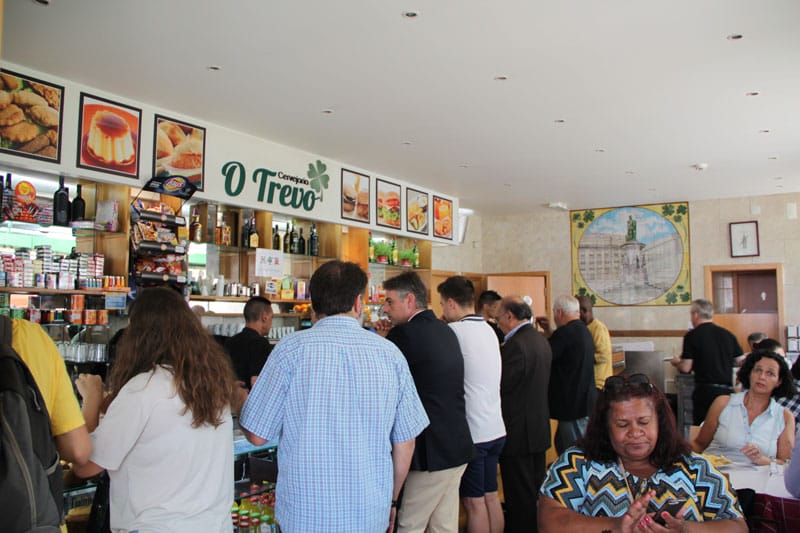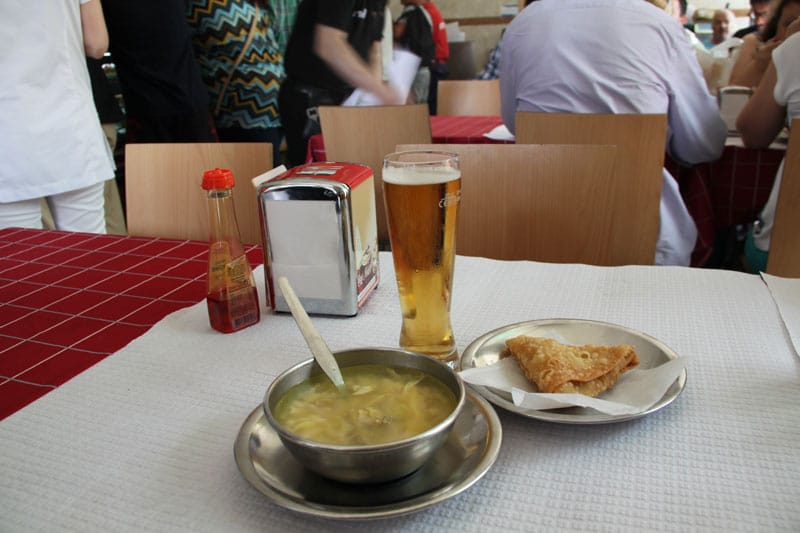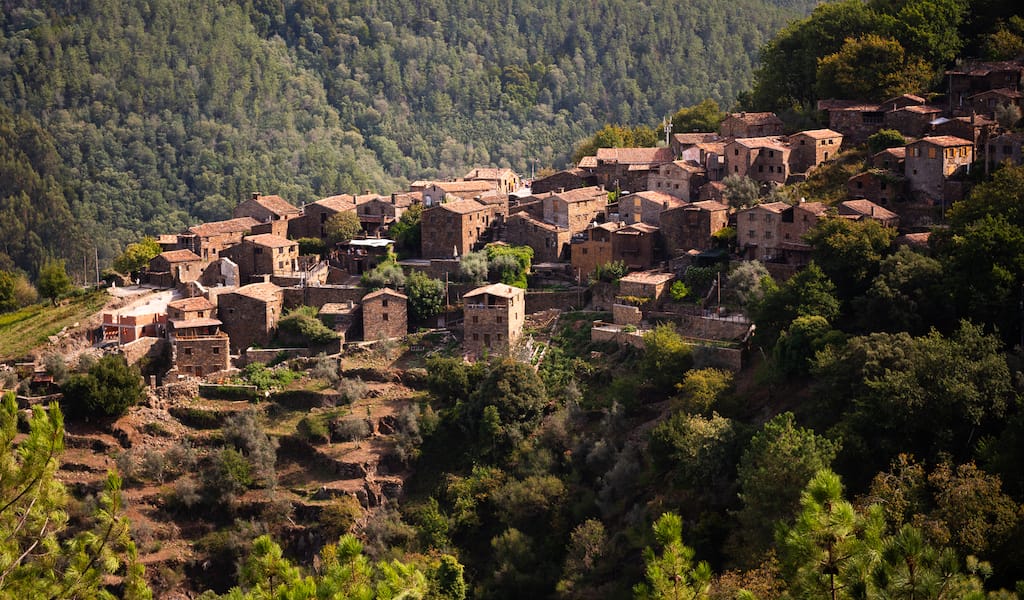A legendary snack bar sits on a corner of Praça Luís de Camões, a busy square dedicated to one of Portugal’s most celebrated poets (his most famous work is the epic Os Lusíadas, a fantastical interpretation of the Portuguese voyages of discovery, narrated in Homeric style). The square is a major thoroughfare in Chiado and witnesses thousands of journeys daily. Many passing through make a pit stop at O Trevo.
This tiny and perpetually packed eatery has historical roots in the area; traces of the old sign “Leitaria Trevo” over the marble entrance reveal its beginnings as a dairy some 80 years ago. It was turned into a dining establishment in the 1970s. Though the dynamic of the city center was almost unimaginably different at that time, O Trevo was already seeing long queues out the door as one of the few eateries in the neighborhood. The 1980s and 1990s brought new competitors, and so things calmed down for a while.

Its spartan interior, where Luís de Camões is painted on wall tile, has just a few tables packed in close and the typical glass-fronted bar showcasing food. Nowadays, O Trevo is crowded once again; residents and tourists come especially for lunch or a salgado (fried savory snack). The large snack variety comprises Portuguese classics: pataniscas de bacalhau (salt cod fritters), cod croquettes, rissol de camarão (a half-moon shaped shrimp pastry), small chicken quiches and chamuças (samosas). The Indian pastry came to Portugal via the Indo-Portuguese colonies of Goa, Damam and Diu. As in other canteens in the capital, the king of the snack bar is the pork steak sandwich bifana, which is prepared non-stop on the griddle just behind the window, visible from the street.
O Trevo also has a lunch menu, which is normally announced outside on a paper tablecloth. À la carte dishes such as thin veal steak served with fries, rice and potato, cozido (the national stew), hake with boiled vegetables or sardines when in season are all typical offers.

A combination typical of many of Lisbon’s old tascas is the “salgado + imperial + canja” break: a snack with draught beer and chicken soup. Canja is a traditional broth commonly believed to aid in recovery from the flu; it is made with cut-up chicken, broth, onion, garlic, carrots, lemon and mint leaves, often with rice or pasta. The origin of this recipe, as with many dishes in Portugal, goes back to imperial times. The word “canja” is a variant of congee, a type of rice porridge consumed in many Asian countries. This dish was popularized in Portugal thanks to Garcia da Orta, a court doctor and naturalist from the 16th century who wrote about Indian medicines and spices and introduced the country to kanji, describing it as a rice soup originating from the South Indian region of Malabar with many health benefits.
O Trevo is the right place to try this classic Lisbon combo, despite the waiting times and commotion. With its cheap prices and smiling waiters who never change, it’s one of the most reliably dynamic and authentic food places in the city center.
Published on October 17, 2016
Related stories
February 17, 2020
QueensSold by the slice, pizza is emblematic of New York City. It’s an inexpensive antidote to hunger pangs that can be ordered quickly, and eaten quickly, even on the go. Think of Tony Manero, the John Travolta character in Saturday Night Fever, double-decking a pair of slices while strutting through Bay Ridge, Brooklyn. At a…
April 8, 2017
BarcelonaThe last calçots of the season mark the beginning of Barcelona's spring. Grab a batch on our Made in Catalonia walk while you still can!
November 23, 2023
Porto“It’s not enough,” says the waiter at O Pascoal. We had inquired if one dish would be sufficient for three people, and his reply is immediate, firm and confident. We take his advice, order another, and the two dishes are easily enough for six people (we are three). We are in Fajão, an aldeia do…



















































































